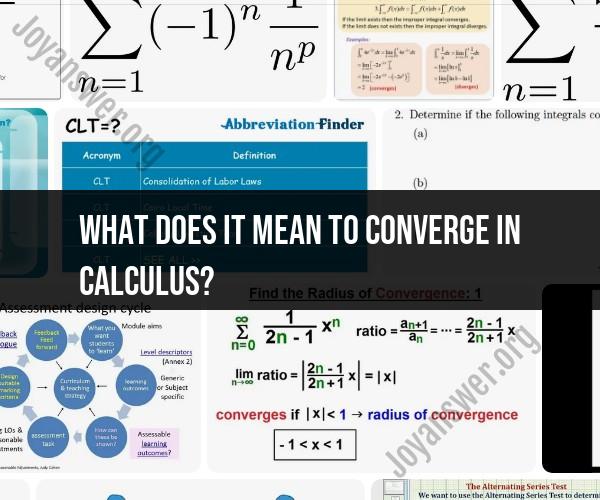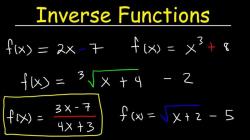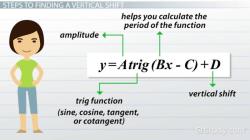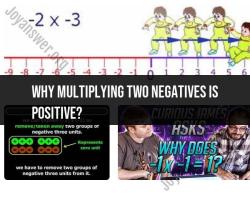What does it mean to converge in calculus?
In calculus, the term "convergence" is used to describe the behavior of a sequence or a series of numbers, functions, or mathematical objects as they approach a specific limit or value. Convergence is a fundamental concept in calculus and analysis, and it plays a crucial role in understanding the behavior of functions and mathematical operations. There are two primary contexts in which convergence is discussed:
Convergence of a Sequence:
- A sequence is an ordered list of numbers (or elements) written in a specific order, such as .
- A sequence is said to converge to a limit if, as you take more and more terms of the sequence, the values of the terms get arbitrarily close to .
- Mathematically, a sequence converges to a limit if, for every positive real number , there exists a positive integer such that for all , .
- If a sequence does not converge, it is said to diverge.
Convergence of a Series:
- A series is a sum of the terms of a sequence, typically written in the form .
- A series is said to converge if the sum of its terms approaches a finite value as more and more terms are added. In other words, the partial sums of the series approach a limit.
- Mathematically, a series converges if the sequence of partial sums converges to a finite limit as approaches infinity.
Convergence is a fundamental concept in calculus because it allows mathematicians and scientists to study and understand the behavior of functions, sequences, and series as they approach specific values or limits. It is essential in various areas of mathematics, including calculus, real analysis, and complex analysis, and it is used to prove the convergence of integrals, the convergence of infinite series, and the properties of functions in various mathematical contexts.
Convergence in Calculus: What It Signifies and How It's Achieved
Convergence in calculus is the process by which a sequence or series of numbers approaches a specific value as the number of terms in the sequence or series increases. Convergence can be achieved in a number of ways, but the most common methods involve using limits and inequalities.
Analyzing Convergence in Mathematical Sequences and Series
To analyze the convergence of a sequence or series, we first need to determine the limit of the sequence or series. If the limit exists and is finite, then the sequence or series is said to be convergent. If the limit does not exist or is infinite, then the sequence or series is said to be divergent.
There are a number of different tests that can be used to determine the convergence of a sequence or series. Some of the most common tests include:
- The ratio test
- The root test
- The integral test
The Concept of Convergence in Calculus
The concept of convergence is important in calculus because it allows us to evaluate infinite sums and series. Infinite sums and series are used in many different areas of mathematics, including calculus, physics, and engineering.
For example, the infinite series 1 + 1/2 + 1/4 + 1/8 + ... converges to the value 2. This means that the sum of all the terms in this series is equal to 2.
Conclusion
Convergence is an important concept in calculus because it allows us to evaluate infinite sums and series. Infinite sums and series are used in many different areas of mathematics, including calculus, physics, and engineering.
If you are interested in learning more about convergence, there are many resources available online and in libraries.











